Last Updated on: September 1, 2025Worried about accidents in your facility? Poor lighting is a silent but significant risk. A single moment of poor visibility can lead to costly mistakes, equipment damage, or serious injury.
LED floodlights enhance industrial safety by providing superior visibility through optimized color rendering and glare control, which helps workers identify hazards quickly. Their reliable drivers and effective thermal management also ensure consistent, flicker-free illumination, preventing electrical risks and ensuring long-term operational readiness in critical environments.
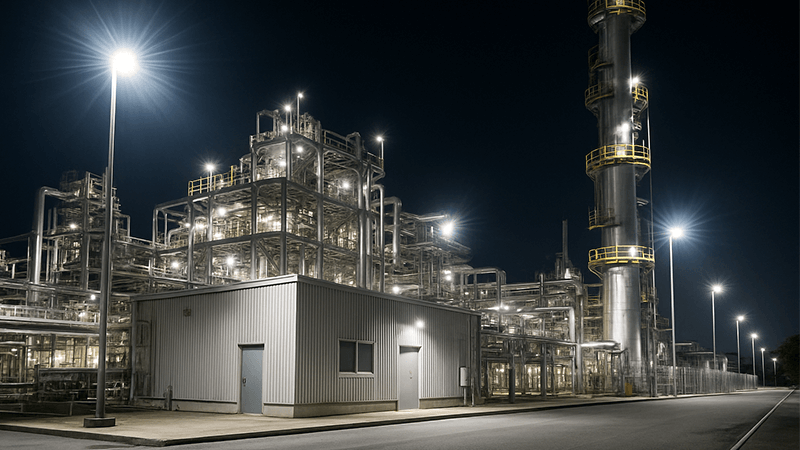
You probably already know that LEDs are more energy-efficient. But when I talk to procurement managers like Shaz, who have years of experience, they want to know about the deeper, more critical advantages. The true safety improvements are not just about brightness. They are hidden in the science of the light itself, the quality of the electronics, and the design of the fixture. Let’s break down where the real value lies for keeping your people safe.
What’s the main benefit of using LED lighting for electrical safety?
Traditional lighting systems often come with high voltage risks and component failures. A faulty ballast or driver can cause electrical surges or fires, putting your entire operation at risk.
The main electrical safety benefit of LED lighting isn’t the low-voltage chip; it’s the high-quality, isolated driver. These drivers provide superior protection against power surges, short circuits, and overheating. This robust electronic design significantly reduces electrical fire risks and ensures stable operation.
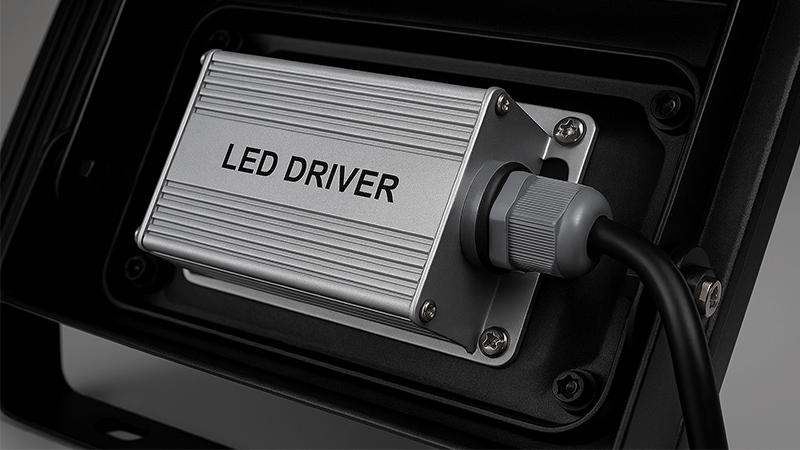
Many people I speak with believe the safety of an LED comes from the low voltage of the chip itself. This is only part of the story. The real hero for electrical safety is the driver. The driver takes your facility’s high-voltage AC power and converts it to the low-voltage DC power the LEDs need. A cheap, poorly designed driver is a major failure point and a fire hazard.
When I was first starting out, I saw a client’s warehouse almost go up in flames because of a faulty ballast in an old metal halide fixture. That experience taught me to never compromise on the electronics. A high-quality LED driver provides critical safety layers that protect the fixture and your facility.
The Role of a Quality Driver
Think of the driver as the brain and the bodyguard of the floodlight. It provides essential protection that cheap components simply cannot.
- Isolation: Isolated drivers create a physical barrier between the high-voltage input and the low-voltage output. This prevents electric shock during maintenance and protects the LED chips from power surges.
- Over-voltage Protection: Good drivers have built-in circuits that shut down the fixture if they detect dangerous power fluctuations. This is crucial in industrial areas where heavy machinery can cause spikes on the electrical grid.
- Thermal Protection: Quality drivers also monitor their own temperature. They will reduce power or shut down if they begin to overheat. This prevents component failure and potential fires.
Here’s a simple breakdown of what to look for in a driver. For a purchasing manager, asking about these specifications is far more important than just looking at the LED chip.
| Feature |
Low-Quality Driver |
High-Quality iPHD Driver |
Safety Impact |
| Circuit Design |
Non-isolated |
Isolated |
Prevents electric shock risk |
| Surge Protection |
Minimal or none |
High (6-10kV) |
Stops power spikes from damaging the light |
| Component Quality |
Basic capacitors |
Long-life, high-temp capacitors |
Ensures reliability and prevents fires |
| Certifications |
None or fake |
UL, CE, ENEC |
Verifies safety and performance standards |
How does better lighting directly improve safety in industrial environments?
Your workers are surrounded by moving machinery and potential hazards. Even with safety protocols, poor visibility can cause misjudgments that standard metrics like lumens or CRI don’t always prevent.
Better lighting improves safety by enhancing visual acuity. A tailored Spectral Power Distribution (SPD) allows workers to see textures, distinguish colors accurately, and perceive depth better. This reduces trips, falls, and mistakes when operating machinery, directly preventing accidents in real-time.
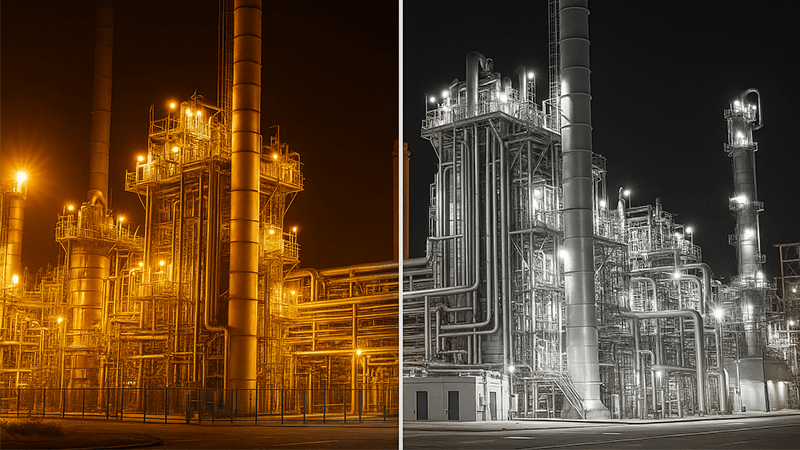
For years, the industry focused on lumens and Color Rendering Index (CRI). These are important, but they don’t tell the whole safety story. The real factor that impacts a worker’s ability to see danger is the light’s Spectral Power Distribution, or SPD. SPD is the "recipe" of the light—how much blue, green, and red it contains.
I remember visiting a factory lit by old, orange High-Pressure Sodium (HPS) lamps. Everything was washed out in a monochromatic glow. It was incredibly difficult to distinguish a red warning tag from an orange one. This is a classic example of poor SPD creating a safety hazard.
Why SPD is More Important than CRI
CRI measures how a light source renders a standard set of colors compared to sunlight. It’s a useful metric, but it is an average. It won’t tell you if the light is weak in rendering a specific critical color, like the red on a fire extinguisher. LEDs are unique because we can engineer their SPD. We can boost specific colors to make important visuals "pop."
- Enhanced Detail: A balanced SPD helps the human eye perceive depth and texture. This means a worker is less likely to misjudge the edge of a step or see a puddle of oil on the floor.
- Improved Color Differentiation: We can design LED lighting to enhance the visibility of safety colors defined by ANSI and ISO. This makes warning signs instantly recognizable.
Here’s how different light sources stack up in terms of their SPD and safety impact. When you’re evaluating floodlights, don’t just ask for the CRI. Ask for the SPD chart. It gives a much clearer picture of real-world safety performance.
| Light Source |
Typical SPD |
Visual Effect |
Safety Implication |
| High-Pressure Sodium (HPS) |
Strong in yellow/orange |
Monochromatic, poor color |
Hard to see warning signs, low detail |
| Metal Halide (MH) |
Spiky, uneven spectrum |
Better than HPS, colors can shift |
Inconsistent visibility, potential glare |
| iPHD LED |
Full, engineered spectrum |
Crisp, clear, accurate colors |
Excellent visibility of hazards and signs |
What is the key advantage of using LED floodlights in industrial settings?
Industrial environments are harsh, with dust, moisture, and vibrations. A flickering or failing light fixture not only disrupts operations but also becomes a safety liability, especially when it goes dark.
The key advantage of industrial LED floodlights is their durability and consistent performance. Proper thermal management prevents light degradation, ensuring stable brightness for years. This reliability reduces maintenance needs in hard-to-reach areas and guarantees that critical zones remain safely lit.
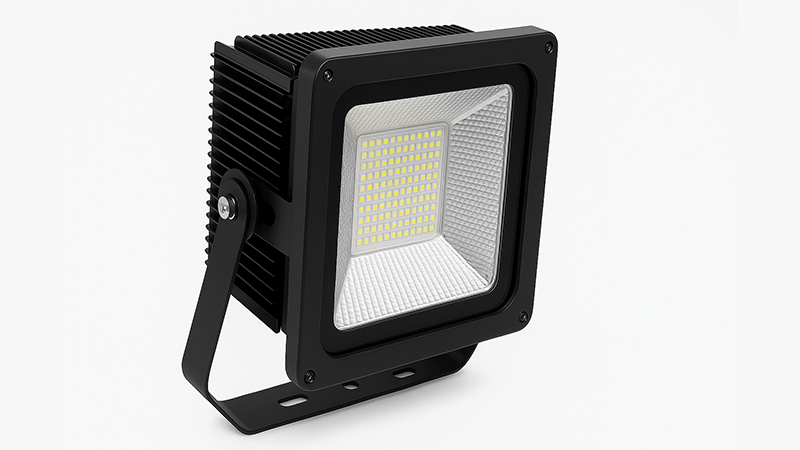
Everyone talks about the long lifespan of LEDs—50,000 hours or more. But this lifespan is meaningless if the light output degrades quickly. In a demanding environment like a factory in the UAE, heat is the number one enemy of an LED. This is where thermal management becomes a critical safety feature.
A well-designed LED floodlight is a sophisticated thermal system. The goal is to pull heat away from the LED chips efficiently. If you fail at this, the light might not burn out, but it will dim. A light that was once bright enough can become dangerously dim within just a year. This gradual decay is a silent safety risk.
How Thermal Management Guarantees Safety
Effective thermal management directly impacts long-term safety and readiness.
- Luminous Stability: A good heat sink, made from high-grade aluminum with a smart fin design, keeps the LED’s temperature low. This leads to slow lumen depreciation, meaning the light level stays consistent for years.
- Emergency Readiness: In an emergency, you need lights you can count on. Fixtures that run cool are more reliable. They are less likely to fail unexpectedly, ensuring that evacuation routes remain visible.
- Reduced Maintenance Risks: Fixtures that fail often require frequent replacement. This means sending staff up on lifts or scaffolding, which introduces new workplace risks. A reliable fixture minimizes this hazardous work.
Here is a comparison of thermal design philosophies. Specifying a floodlight with a robust thermal management system is an investment in consistent safety, not just light. It ensures the safety levels you establish on day one are maintained for years.
| Thermal Design Aspect |
Poor Design (Low-cost fixtures) |
Excellent Design (iPHD Standard) |
Long-Term Safety Impact |
| Heat Sink Material |
Thin, die-cast aluminum |
Cold-forged, high-purity aluminum |
Superior heat dissipation, slower decay |
| Surface Area |
Minimal fins, flat surfaces |
Large surface area with engineered fins |
Faster cooling, lower operating temperature |
| Airflow |
Enclosed, trapped design |
Open, convection-friendly design |
Prevents heat buildup within the fixture |
What are the wider safety benefits of LED floodlights?
Bright lights often create a new problem: debilitating glare. Glare can momentarily blind workers operating forklifts or other heavy machinery, leading to collisions, falls, and catastrophic mistakes.
Beyond brightness, a wider safety benefit of LED floodlights is advanced optical control. Precision lenses direct light exactly where needed, eliminating dangerous glare for workers. This improves visibility without causing temporary blindness, a crucial factor around heavy machinery.
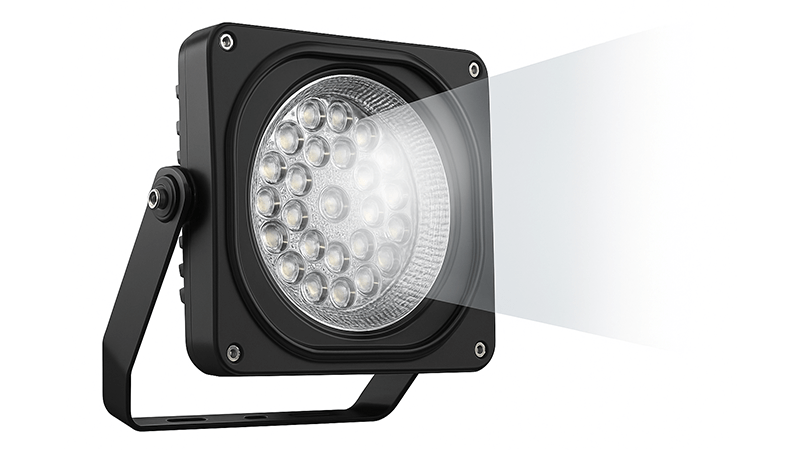
A common mistake is installing the brightest floodlights available, thinking more light equals more safety. But uncontrolled light creates glare, an underestimated safety hazard. Imagine a forklift driver blinded by a poorly aimed floodlight as they approach a walkway. The results can be tragic.
Safety isn’t about raw power; it’s about control. This is where the optics of an LED floodlight—the lenses and reflectors that shape the light—become a game-changer. Dimming the light isn’t the right answer, as that can create dark spots. The real solution is to control the light beam.
Using Optics to Eliminate Glare
Unlike old fixtures that threw light everywhere, modern LED floodlights use sophisticated optics to create specific beam patterns. This ensures light goes only where it is needed and useful.
- Asymmetrical Beams: For large areas, asymmetrical lenses can push light forward and to the sides. This illuminates the target area without creating glare for people directly below the fixture.
- Shields and Louvers: Physical accessories can cut off light at certain angles. This prevents it from spilling into areas where it could distract or blind workers.
- Low UGR Designs: Unified Glare Rating (UGR) measures discomfort glare. Fixtures designed with low UGR optics are purpose-built for visual comfort and safety.
Consider the application when choosing your optics. As a procurement expert, looking beyond wattage to optical specifications—like beam angle and UGR rating—is essential. This is how you source a truly safe lighting solution.
| Application |
Common Problem |
Optical Solution |
Safety Outcome |
| High-Mast Area Lighting |
Glare for ground personnel |
Asymmetrical Type III or IV optics |
Even illumination without glare |
| Loading Docks |
Blinding truck drivers |
Full cut-off optics or adjustable shields |
Drivers can see clearly while backing up |
| Indoor Factory Aisle |
Glare for forklift operators |
Low UGR linear optics |
Clear visibility without eye strain |
| Perimeter Fencing |
Light pollution and glare |
Narrow, forward-throw beam patterns |
Illuminates the fence line without blinding patrols |
Conclusion
True industrial safety comes from quality light, reliable electronics, and precise control, not just brightness. Investing in well-engineered LED floodlights is an investment that protects your people and your operations.